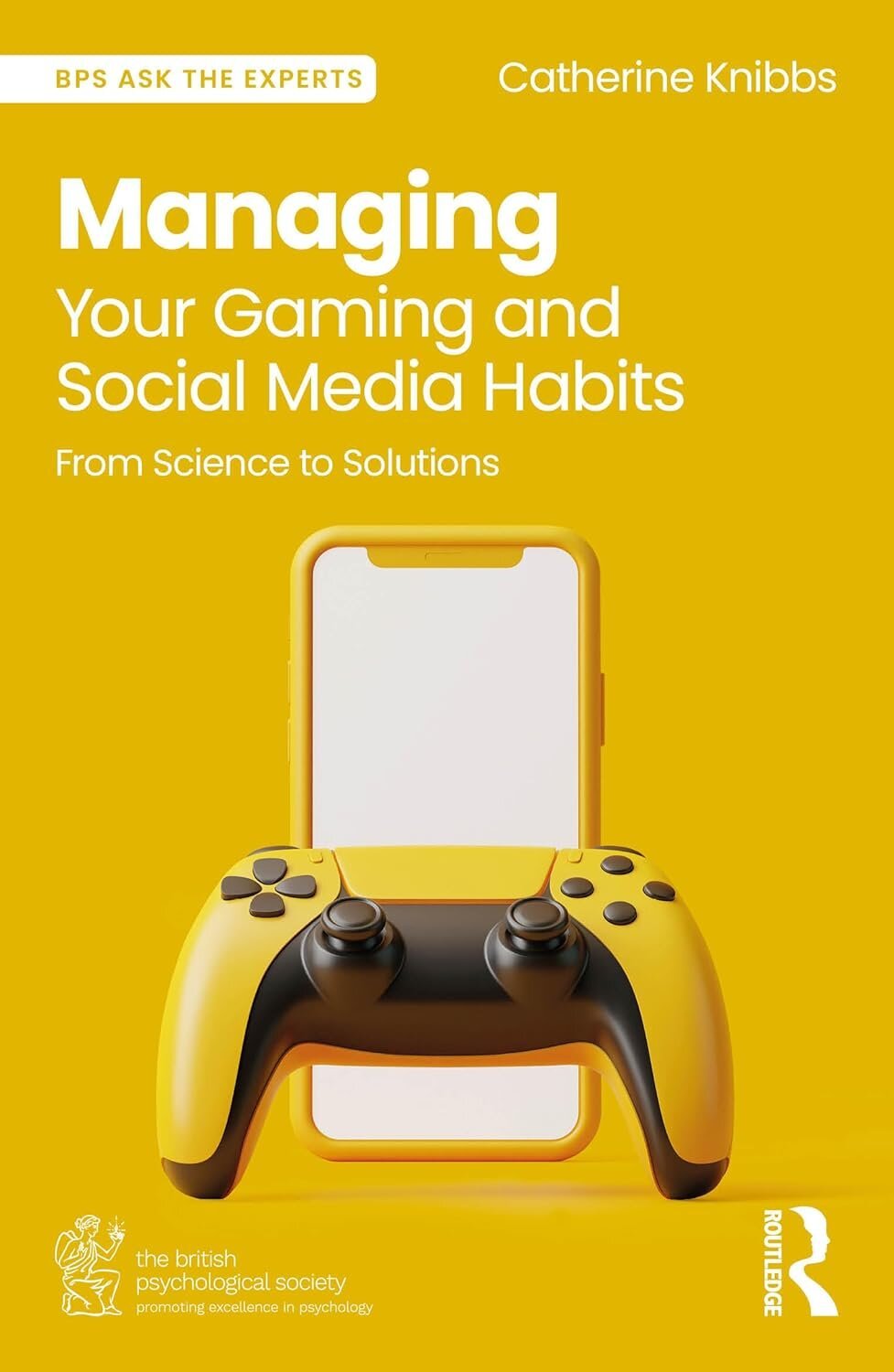
Many of us feel that we, or our children, spend too much time staring at a screen. From gaming to social media use or “doomscrolling,” it can sometimes feel that we are mindlessly spending hours going down a rabbit hole of technology.
However, according to Catherine Knibbs, a psychotherapist who specializes in cybertrauma and online harm, there are tangible steps we can all take to wrestle back control from the hands of technology corporations.
In her new book, “Managing Your Gaming and Social Media Habits: From Science to Solutions,” part of the new Ask The Experts in Psychology series in partnership with the British Psychological Society, Knibbs argues that technology itself is neither good or bad. Rather, it depends on how it is used, and who it is used by.
“For some people, social media and gaming offers a lifesaving space,” says Knibbs. “Games provide a space for people to connect, and to combat other feelings that exist in their lives such as loneliness, anxiety, depression.”
For example, Knibbs points to the role that technology played in allowing us to connect with others during the COVID pandemic, when we couldn’t socialize physically.
“Cyberspace connections result in people being connected, and young people and adults tell me that the communities they are part of online help them feel like they are with people who understand them, see them and have the same interests. This can help them when they feel alone and in need of support.”
However, problems can arise if a person spends so much time engaging with technology that they stop paying attention to full bladder signs, or no longer want to participate in the real world, Knibbs explains. Eventually, it can lead to a situation where children skip school, or adults don’t go to work.
The key, she suggests, is to manage our technology use so that we can reap the rewards without falling prey to the negative sides of screen use. According to Knibbs, the first step in this process is to understand the tricks that technology companies use to get you addicted to their apps and devices in the first place.
“Technology companies create products that deliberately tap into our inner-most desires and needs so as to keep our attention on those products,” says Knibbs.
These innate needs include our desire to be recognized, seen, valued, loved and needed, Knibbs explains. For example, video games offer users visibility of experience points (XP), prestige status and trophies, skins and other visible attributes that show how “good” a player is.
There is also our fear of missing out: “We are born ready to socialize and in doing so we have a primary need to get others to take care of us to prevent us from being rejected, abandoned, and causing us to die,” says Knibbs.
“That avoidance of rejection and abandonment underpins most of what you do daily. Especially on social media.”
Technology also taps into our desire for novelty, excitement and reward, Knibbs explains. To grab our attention and keep it, apps send out a constant stream of prompts, pings and pushes, nudges, and rewards.
So what can we do about this? Knibbs recommends starting with writing a diary of technology use and thinking critically about the situations in which you use it, and what needs you are trying to meet when you reach for your smartphone.
“You might notice what you did, where you were and what time it was when you first noticed the urge to open the phone, laptop, computer, console etc. for the first time on this day of the week,” says Knibbs.
The aim is to recognize when your use of technology is helpful and purposeful, and when it is not, Knibbs explains, and to try to engage with social media in a more mindful and purposeful way so that users feel more in control. She encourages people to try to notice the kinds of things they seek out online, engage with, scroll past, or hover on when in the spaces of social media.
Other tips include turning the background colors to black and white, removing notifications from the app or home screen, or installing time blockers to tell users when they have spent a certain amount of time online.
“When we engage with social media or gaming we disconnect from our bodies and being present, and spend that time interacting with the media for what can seem like hours,” says Knibbs.
“This is one of the reasons why we get ‘caught up’ in the scrolling. Being able to avoid these traps requires us to become skilled at noticing. Mindful meditation practices can help, and with continuous practice you should be able to switch to a state where you can engage with technology more intentionally, when you have the capacity to do so.”
More information:
Catherine Knibbs, Managing Your Gaming and Social Media Habits (2024). DOI: 10.4324/9781032617251
Provided by
Taylor & Francis
Citation:
How to control your screen time and make technology work for you (2024, August 26)
retrieved 26 August 2024
from https://phys.org/news/2024-08-screen-technology.html
This document is subject to copyright. Apart from any fair dealing for the purpose of private study or research, no
part may be reproduced without the written permission. The content is provided for information purposes only.
